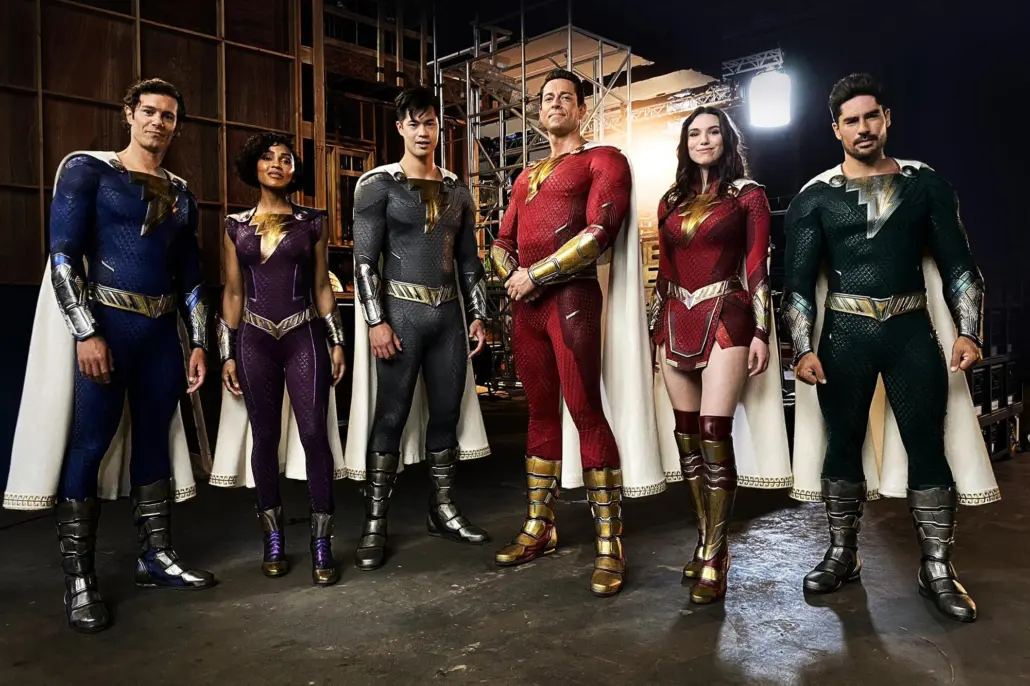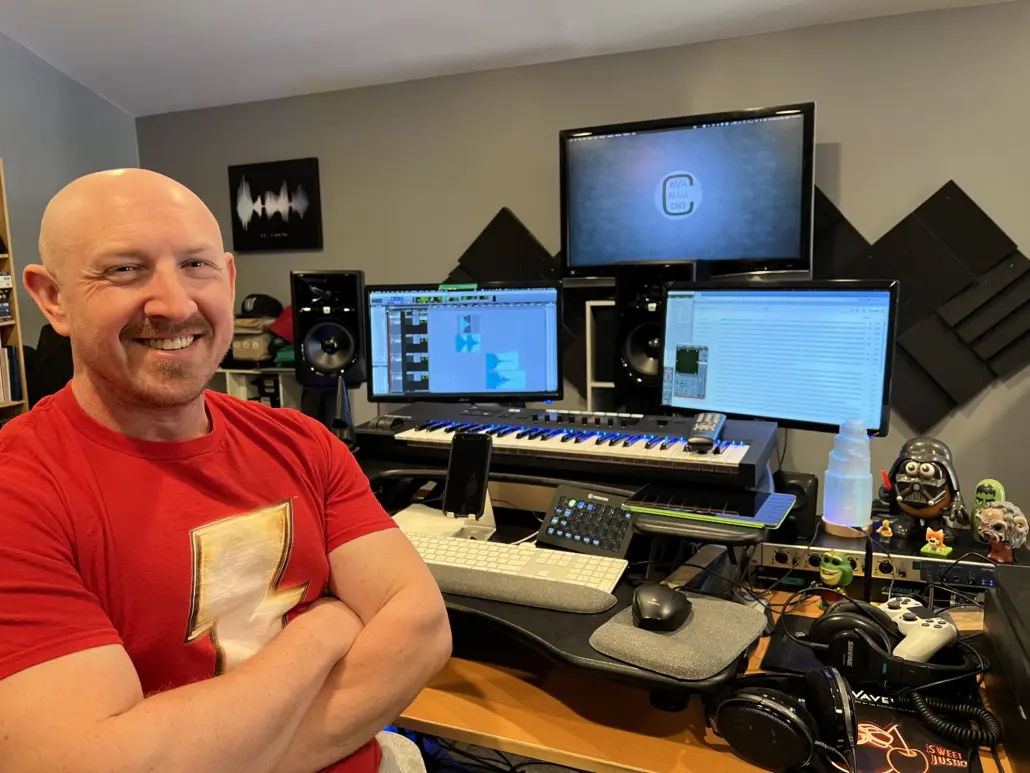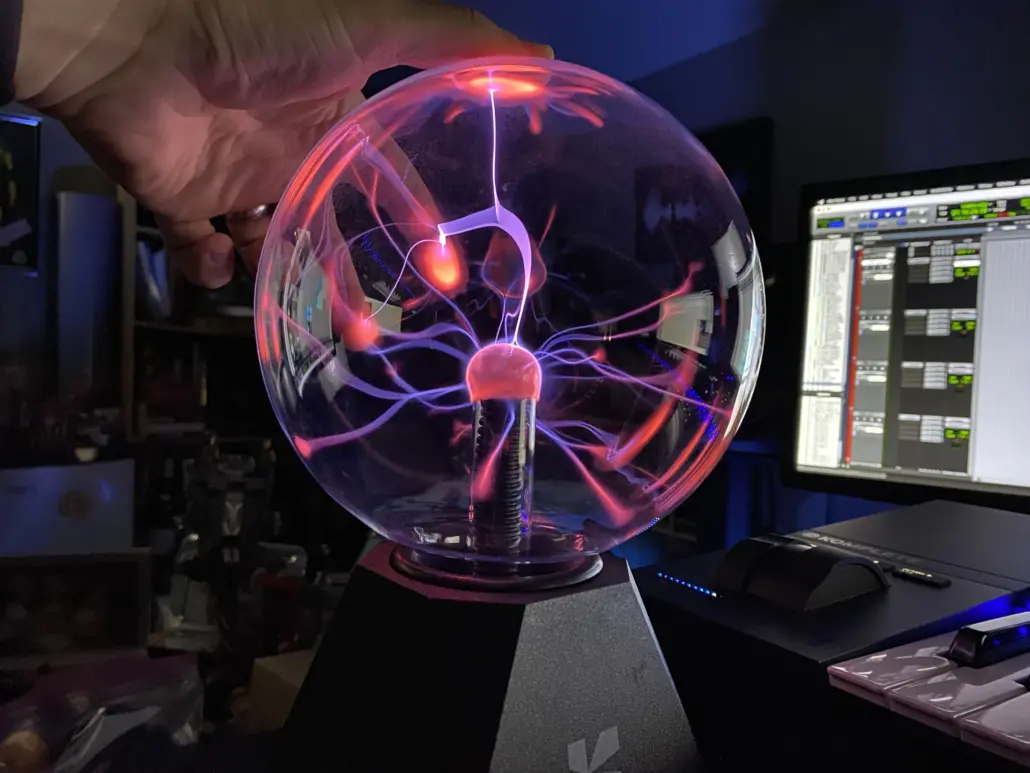Behind the Scenes of Shazam! Fury of the Gods–Sound Effects

Alum Matt Cavanaugh shares what sound effects editing techniques were used on Shazam! Fury of the Gods.
We interviewed alum Matt Cavanaugh at his home studio in Burbank, CA, and talked about all things sound effects for the new Shazam sequel. Matt was part of the team of sound effects editors who worked on the creature sounds and action sequences for Shazam! Fury of the Gods. Check out our interview and follow along as Matt shares a behind-the-scenes look into what it was like working as a sound effects editor on Shazam! Fury of the Gods movie.

Tell us how you transitioned from the U.S. Air Force into the film industry. Did you always have an interest in film?
There was a show on TV when I was in high school called Movie Magic that showed behind-the-scenes videos of how special effects were made on big Hollywood movies. I had always loved watching movies, but getting to actually see how these impossible scenes were made truly was like a magician letting you in on the secret of how the illusion was pulled off, which made me love movies even more.
I joined the US Air Force after college, and about halfway through my enlistment, I came across the special features on the extended Lord of the Rings DVDs, which probably has the most in-depth cast and crew making-of videos I’ve ever seen. When I saw the sound crew though I was hooked. I loved the thought of a job where I could go on field trips to record cool sounds and use the recordings to create sounds for things that didn’t even exist. When my enlistment ended my wife and I drove our young family across the country to Los Angeles and worked to get my foot in the door.
You went through two programs here at The L.A. Film School. What made you want to come back for Recording Arts and pursue sound effects editing?
There were lots of reasons I chose to attend LAFS, one of them being that they are part of the Yellow Ribbon program with the GI Bill. Without the LAFS military department helping me take advantage of the monthly housing allowance, I honestly don’t think we could have stayed afloat while I was starting my career.
The film program was an easy first choice for me. Post-production sound happens mostly just at the end of the filmmaking process, and I really wanted to have a full understanding of what was happening before a movie came across my desk. LAFS gave me exactly that with hands-on, step-by-step courses with terrific instructors, detailing pre-production to the final mix and beyond.
The recording program, besides continuing to help pay the rent via the GI Bill, was a huge help in revealing audio techniques and tools I wasn’t as familiar with. When I started the program I was already comfortable using Pro Tools and understood the post-sound process, and LARS expanded on that with lots of hands-on classes that introduced more of the music side of things.
Your film credits are amazing! How did you land your first big project out of school?
My first handful of credits were all low/no-budget projects I found on Craigslist or by word-of-mouth from other sound people I’d met after moving out here. A friend and talented sound editor named Joel Erickson whom I met at a Pro Tools and post-sound program hooked me up with a job at E Squared Sound as a post-production assistant, where I mostly set up editing systems for their sound editors and got to peek over their shoulders a bit while they worked. Eventually, I landed my first big credit with them on Transformers 4 as a Post PA. That gig led to another, and another, until I eventually I had regular work freelancing with several great sound teams.
Any advice on how future grads can break into the industry?
Industry legend Randy Thom gave me some advice when I was first investigating post-sound as a career that I’ll echo here; get intimately familiar with Pro Tools. For better or worse, it’s the industry standard DAW in Hollywood, and the better you can utilize the program, the easier it will be to keep pace with the production and stay in a state of flow.
Beyond that, I recommend a popular exercise where you redo the sound design of a favorite scene from a movie or TV show. Something that features good action or creatures or magic, or anything else that lets you show off what sound skills you’re capable of. You can record your own sounds with a cheap mic and recorder (or even with a phone if you’re in a pinch). You can find also find free, cheap sound effects online. Once you got a short sound design demo you’re proud of, you can post it online for feedback, or even reach out to sound professionals whose work you admire and they can offer a short critique. Besides being a great way to improve your sound design, editing and mixing skills, it can be a very useful calling card.
I would caution you not to get too hung up on the tools when starting out. Being familiar with audio workstations and plugins can be immensely useful, but many sound designers will tell you the best audio tools are your own ears and what’s between them. Use whatever equipment and software you have available and work on getting your stuff to sound good quickly.
Can you sum up what you do as a Sound Effects Editor in 3 sentences or less?
Basically, sound effect editors take recordings of sounds and edit them in sync with something (in my work it’s typically a video file). These sounds can be recordings gathered out in the real world using microphones and recorders or synthesized using analog or digital sound equipment. Sound effect editors will often design unique sounds by processing and layering audio in clever ways.
Shazam! Fury of the Gods comes out on March 17. What was it like working on the sequel?
It was a fantastic experience! Our director, David Sandberg, is a terrific storyteller and filmmaker and all-around movie nerd, and is a genuinely good guy, which made working for him a pleasure. Our sound team was led by sound supervisor Kami Asgar, who’s also an amazing storyteller with great ears for what sounds good, and I couldn’t have asked for a better boss. The schedule for the show afforded us a good amount of time to really get the sounds right too, which is often a rare luxury in post-sound where many show schedules shrink in an effort to save costs.
Fury of the Gods features tons of magic and creatures and superpowers, which is always fun for sound design. David had us dial in a few key sounds for some of the magic and creatures early on, which let us spend a good amount of time polishing those moments later on. For other sounds though, he let us kind of run wild, which produced some amazing results. I’m so proud of what we were able to achieve with the overall soundtrack for the movie, and I think fans of the first movie will love this one just as much.
Can you share what the process looked like for Sound Effects Editing on Shazam II?
Our workflow for sound editing for this movie was about the same as other modern feature films. Early on we received a few key action sequences from the picture department that featured more intense sound design needs, which let us get some of the heavier lifting out of the way and helped us establish the sonic tone of the movie, plus it gave David and Michel Aller, our super talented picture editor, some sounds to help ground the early rough VFX a bit more in reality.
As the post process continued we added more sounds, balancing those sounds again the music and dialog, and often revisiting sonic moments that could stand to be improved on. As with most big movies, everything on the screen that could make a sound needed to have a sound effect added, even things that were recorded on set. It can take a long time but is essential for when the movie gets dubbed into other languages for worldwide release.
We got to do some interesting recordings as well, including a Shofar, a bunch of different animal hunting calls, a lot of Skittles, and a plasma ball. Those recordings would then get cleaned up and processed into different creature vocals or superpower sounds.

Plasma ball used as a sound effects prop for Shazam II
What software programs do you primarily use when working on projects like this?
Like most Hollywood movies we edited and mixed everything almost entirely in Pro Tools, as well as a swath of different plugins and apps to help us mangle and manipulate sounds. Soundminer was absolutely vital to our workflow too, as well as its Radium sampler.
Are there any sound sequences from your past projects that you are proud of and why?
I’ve been super lucky to have worked on some great-sounding movies, and just about everything I’ve edited sound on has multiple moments where we pulled off something impossible. The one’s I’m most proud of are often the projects where I learned and improved the most, or where the sound team was great to work with. For that, I think Shazam might be the project I’m most proud of so far. I also love the underwater action we did on The Meg, the Cybertron battles we did on Bumblebee, and the creatures we designed in Love and Monsters.
We’ve got to know… Are you Team Marvel or Team DC?
I’m team whoever’s-willing-to-hire-me! So having worked on both Venom 2 and Shazam 2 it’s an even tie! I grew up favoring Marvel comics over DC, but all my book and movie shelves at home have a pretty even balance now. I’ve enjoyed a lot of what both studios have produced so far, and it’ll be really interesting to see where each of them goes in the future.
Batman is king though. So if push came to shove… I guess DC wins.
